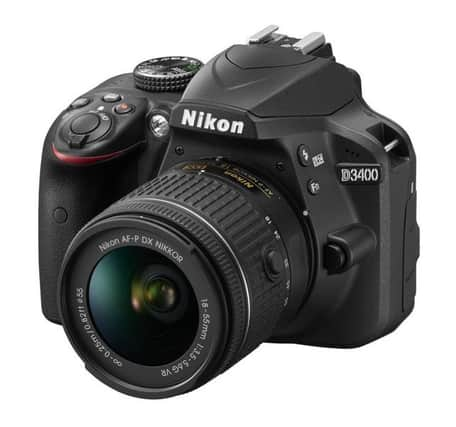Still no substitute for a proper digital camera


But while mobiles are perfect for casual snapshotting, they don’t even begin to compete with either the optics or electronics of dedicated cameras. So while the market for cheap, point-and-shoot gadgets has contracted in the last few years, the appetite for mid and top-end models is as buoyant as ever.
Photography has never been a cheap hobby, but it’s no more expensive now than it ever was. Digital cameras have been around long enough for a healthy market to have evolved in second-hand lenses and accessories - and, of course, there is no film to buy or develop.
Advertisement
Hide AdAdvertisement
Hide AdIf a few years have elapsed since you last bought a camera, you’ll find the market has changed significantly. The principal choices now are not between fixed and interchangeable lenses, but between mirrorless and digital single-lens reflex (DSLR) mechanisms.
If you’ve been taking pictures for years, the principle of DSLR, with its optical mirror and prism, will be instantly familiar. It has hardly changed since the days of film, except that the celluloid has been replaced by a digital imaging sensor.
Mirrorless cameras are smaller but can produce pictures of a similar quality to those taken on a DSLR with the same size sensor. The absence of an optical viewfinder is compensated by potentially better real-time previews and easier video shooting. At the moment, the cheapest mirrorless cameras tend to cost more than their DSLR equivalents.
Both types of camera can take interchangeable lenses, and you may be able to use your old film or DSLR ones on a mirrorless body, albeit with an adapter and a reduced aperture, and without autofocus.
Advertisement
Hide AdAdvertisement
Hide AdFixed-lens cameras these days tend to be “bridge” models that look like DSLRs but don’t usually compare on quality. There used to be a market for smaller bridge cameras, but as phones have become more capable, they have been phased out.
Whatever size and system you prefer, the most important consideration is the size of the image sensor, the part of the camera that captures the light needed to form a digital image. Generally, speaking, the bigger the sensor the more light it can capture, and the more expensive it will be.
Sensor size shouldn’t be confused with resolution, which is measured in megapixels and is the headline figure used by manufacturers. For practical purposes, every camera today is more than sufficient in that department. Sensor sizes, on the other hand, vary between 4.5mm (typically on a phone) and a full frame 36mm.
The £340 Nikon D3400 is perhaps the gold-standard in entry-level DSLR cameras right now. In the mirrorless market, the Olympus OM-D E-M10 II, at £450, is a close match. But don’t judge by their specifications alone - these are tactile tools, and you should always buy the one that feels most comfortable to you.
Advertisement
Hide AdAdvertisement
Hide AdIn particular, consider how you tend to use your camera. If you are fond of unusual angles, look for a model with a rotating preview screen - it will help you capture high-up or low-down shots without the need to turn yourself into a contortionist. Likewise, look for wi-fi or GPS connectivity if those features are important to you.
The one thing the technology hasn’t changed is the creativity of photography. On the contrary, the more useful features at your disposal, the more creative you can be.